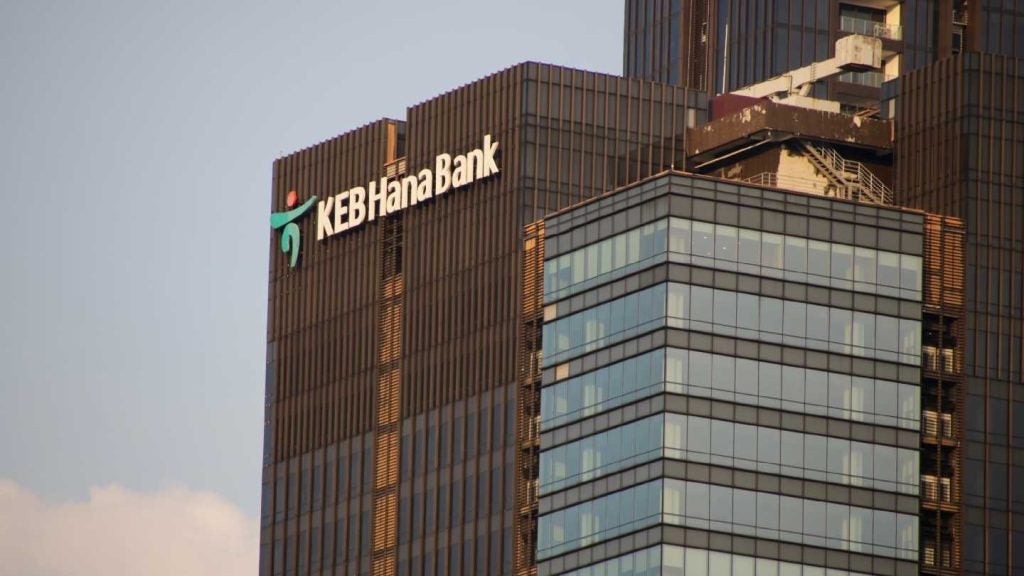The quiet strength of operations
Retail banking’s progress is often measured by what customers can see – sleek apps, instant payments, and frictionless onboarding. Yet the most important part of the system remains invisible: operations. When they work perfectly, no one notices. When they fail, confidence collapses.
Operational excellence has always been the quiet strength of banking. It lives in the reliability of processes, the accuracy of reconciliations, and the calm that customers feel when their money moves safely and predictably. Today, as technology accelerates, operations have moved from being a back-office function to the front line of trust.
The pandemic years revealed this truth clearly. While new digital features won headlines, the real success stories were operational – uninterrupted access, same-day settlements, and resilient service continuity. Behind every moment of customer convenience stood a team ensuring that nothing broke, even when everything changed.
Now, as banks race toward hyper-automation and real-time infrastructure, the definition of operational excellence must evolve again. The next transformation will not be about what customers see. It will be about what they never have to think about. The true measure of modern operations is not visibility, but dependability.
Operations are the invisible rhythm of the bank. Their job is not just to make systems faster but to make institutions steadier. When operations succeed, confidence compounds quietly. When they fail, even the most advanced digital interface cannot save the experience.
In the coming years, operational resilience will be the defining competitive advantage of retail banking. The institutions that understand this will not just win customers – they will retain their faith.

US Tariffs are shifting - will you react or anticipate?
Don’t let policy changes catch you off guard. Stay proactive with real-time data and expert analysis.
By GlobalDataFrom efficiency to experience
For decades, operational efficiency meant cost reduction, centralisation, and automation. It was a game of speed and scale – doing more with less. But customers no longer measure efficiency by how fast a process completes. They measure it by how reliably it delivers peace of mind.
A system that executes a transaction in seconds but fails once a month does not feel efficient to a customer. Efficiency without dependability is like speed without direction. In modern retail banking, true efficiency must include emotional continuity – the feeling that a process will work the same way every time, regardless of platform, hour, or device.
Operations are now the quiet designers of customer experience. They determine whether service feels seamless or stressful, consistent or confusing. Every late payment, declined card, or unresolved complaint reflects an operational reality behind the scenes.
The most progressive banks have already begun to rethink efficiency as a human experience rather than a numeric metric. A quick refund, a proactive alert, or a personal apology is no longer “nice to have.” They are proof that the bank’s operations are designed for empathy, not just for optimisation.
The next generation of operational transformation will focus less on removing people and more on empowering them. Front-line teams will need faster information, clearer escalation paths, and authority to resolve issues without bureaucracy. Customers do not expect perfection – they expect clarity and care when things go wrong.
Efficiency, in its modern sense, is not about speed; it is about stability. It is not about processing time; it is about peace of mind.
In the future, operations will not be judged by how quickly they move data, but by how calmly they manage disruption. The new metric of success is not throughput – it is trust.
The human architecture behind automation
Automation has transformed banking operations, replacing repetition with reliability and scale. But it has also created distance. Processes once managed by people now run through algorithms and scripts. They are efficient, but often opaque.
A well-designed process can prevent error, but it cannot explain intent. Automation without accountability creates invisible walls where empathy used to live. When customers encounter errors, they want understanding, not just resolution.
This is where human architecture matters – the organisational design, values, and judgment that make automation meaningful. Systems can execute, but people must interpret. Operations leaders now carry a dual responsibility: to ensure accuracy and to ensure humanity.
Modern operational excellence is not about choosing between machines and people. It is about designing systems where both excel together.
For example:
- Automation identifies the exception; a person explains it.
- The algorithm flags unusual behaviour; an operator reassures the customer.
- The system executes a fix; a colleague closes the loop with empathy.
These moments may seem small, but they define the tone of modern trust. A message signed by a real name instead of “no-reply,” a short call after a system delay, or a personalised explanation in plain English – these gestures restore accountability in automated journeys.
Automation delivers efficiency; human assurance delivers meaning. One without the other is incomplete.
In the future, the strongest banks will not be the most digital, but the most human through digital. Their operational design will combine precision with care, ensuring that every automated process still reflects a person’s intent and a bank’s promise.
Re-engineering for empathy
Process re-engineering was once about removing steps. Now it is about removing anxiety.
Every bank has streamlined forms, digitised approvals, and shortened service times. But the emotional journey often remains complex. Customers still wonder: “Has my transaction gone through?” “Why is my payment delayed?” “Who can I talk to?”
Empathy in operations means designing processes that answer these questions before they arise. It means transparency that feels reassuring, not overwhelming.
True re-engineering begins with understanding where customers lose confidence – not just where they lose time. It asks different questions:
- Do our processes explain themselves clearly?
- Do our alerts reduce stress or amplify it?
- Do our handoffs feel coordinated or chaotic?
Empathy does not mean indulgence; it means awareness. It is the recognition that a customer’s time, effort, and trust are operational assets. Each must be protected.
The most resilient operational cultures are those where empathy and precision coexist. A process that balances both achieves something rare – it becomes predictable and personal at once.
Governance frameworks, risk controls, and service-level agreements must evolve to include the language of empathy. An operational team that measures not just compliance, but care creates a different kind of excellence – one that customers can feel even if they never see it.
Re-engineering for empathy is the next quiet revolution. It is the shift from processes that function to processes that reassure.
Metrics that matter
Banks measure nearly everything – turnaround times, uptime percentages, call volumes, and automation rates. But few measure how customers feel about what just happened.
Operational metrics are precise, but not complete. They tell us what occurred, not how it was experienced. To rebuild confidence, banks must expand their measurement language.
Imagine dashboards that track:
- First-contact clarity: Did the customer fully understand the resolution?
- Reassurance rate: After interaction, did the customer feel calmer and more confident?
- Operational empathy index: How often did staff demonstrate awareness of customer emotion during problem-solving?
- Accountability visibility: How quickly did a human take ownership when an issue arose?
These are not sentimental metrics – they are economic ones. A customer who feels understood stays longer and complains less. Each reassured interaction is an invisible retention strategy.
Leadership teams often celebrate “mean time to resolution.” But the deeper question is: resolution for whom? If the issue was closed in the system but not in the customer’s mind, the metric is meaningless.
Modern operations require balanced scorecards – where quantitative precision and qualitative empathy coexist. When leadership reviews are as focused on reassurance as they are on speed, culture begins to change.
Numbers matter. But in banking, feelings often decide whether those numbers sustain.
Operational leadership in the age of accountability
The modern head of operations wears many hats: technologist, risk manager, communicator, and custodian of customer trust. Their job is no longer limited to keeping the lights on; it is to ensure that the light always reaches the customer.
Accountability begins with visibility. When an operational issue occurs – whether a delayed payment, an outage, or a reconciliation error – leadership response defines the tone. Customers do not expect perfection, but they do expect presence.
A public acknowledgment, a transparent update, or a timely apology restores confidence faster than silence ever could. Accountability in operations is not just about owning the problem; it is about humanising it.
Great leaders treat trust as an operational deliverable. They make accountability measurable. They review not only downtime reports but also response behaviour. They reward transparency and quick recovery rather than concealment and control.
In the new operational model, culture is the strongest control system. When teams know that integrity is celebrated, they act faster and speak sooner.
Operations leadership must also champion collaboration. Technology teams, customer service, and risk management must operate as one fabric. Fragmented ownership leads to fragmented accountability.
The modern operations leader, therefore, is not a controller of process but a conductor of confidence. Their success is not in avoiding every failure but in ensuring every failure is handled with clarity, speed, and empathy.
This is the leadership standard that will define operational credibility for the next decade – visible humility, decisive action, and consistent care.
The future: Invisible yet indispensable
Operational resilience will soon be the new brand promise of retail banking. In a world where technology becomes invisible, operations will remain the visible proof of integrity.
The future of operations will rest on three enduring principles:
- Anticipation: Prevent failures before customers feel them. Predict weak links and fix them quietly.
- Adaptability: When disruption occurs, recover faster than expectation and communicate transparently.
- Assurance: Keep customers informed with honesty and empathy; explain before they ask.
The best operations will not seek praise – they will seek consistency. The real reward of operational excellence is invisibility: when customers never have to wonder if things will work, they simply trust that they will.
Operational resilience will also become the new form of inclusion. When systems work seamlessly, regardless of user age, access, or ability, confidence spreads more evenly. Reliable operations are the foundation of fairness.
Technology will continue to evolve, but it will never replace accountability. Systems execute transactions; people sustain trust.
As banks move into an era of real-time everything, the invisible backbone of operations will determine who leads and who follows. The institutions that view resilience not as insurance but as identity will define the future.
In time, customers will forget app designs and promotional offers, but they will remember how their bank behaved when things went wrong.
Operational resilience is therefore not only a technical goal but a moral one – to protect customers not just from error, but from uncertainty.
When the next transformation arrives, it must be invisible – not because it hides progress, but because it makes progress feel effortless.
In the end, great operations are like trust itself: unseen but everywhere felt.
Dr. Gulzar Singh, Senior Fellow – Banking & Technology; CEO, Phoenix Empire Ltd









